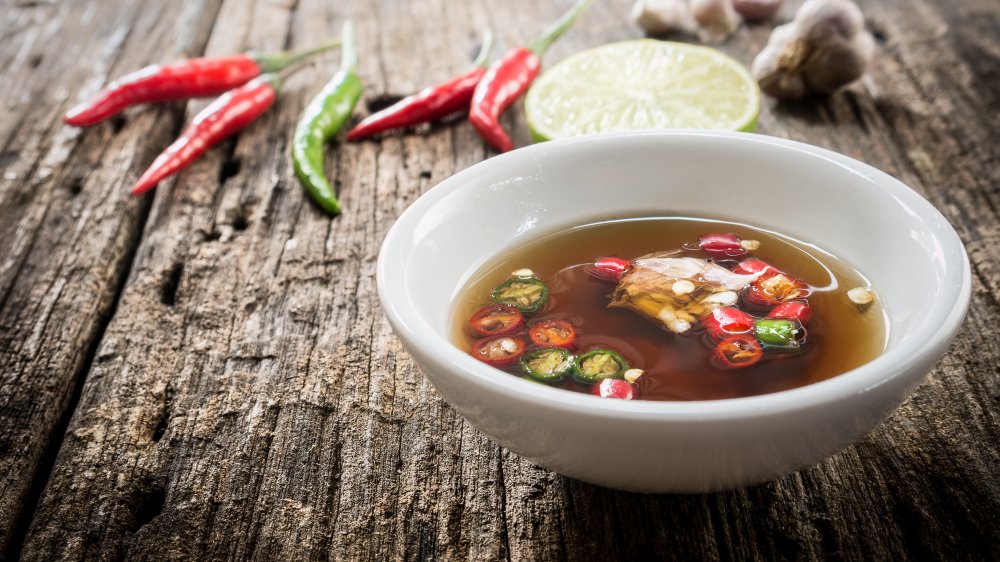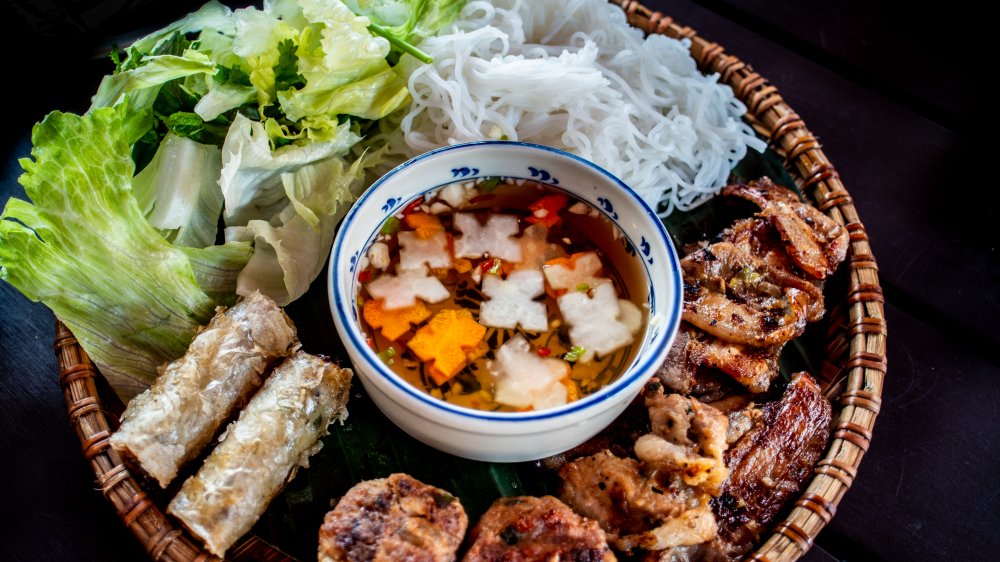Here's How Fish Sauce Is Really Made
The dark amber liquid is known by many names across Southeast Asia: to the Vietnamese it is nuoc mam; in the Philippines, it is patis; to the Thais, it is nam pla, and in Myanmar, it is ngan-pya-ye (via Casa Veneracion). Its scent may need some getting used to, but fish sauce is the backbone for many cuisines across Southeast Asia — and if you're traveling through the region, fish sauce has a scent and a flavor you may either grow to love, or at least get used to (via Gourmet Sleuths).
Fish sauce is made by mixing fish and salt in a 3:1 ratio and then leaving the mixture to ferment in big vats. Manufacturers normally use anchovy for this mix, as the Washington Post says using bigger fish like mackerel or sardine will result in a less cost-effective product. About a week into the process, the fish/salt mixture starts seeping liquid — which is then drained and reintroduced into the vat for an extended period of time. The process can take anywhere between six months to a year, with the first extraction being used for dips and sauces, and later extractions used for cooking (via Washington Post).
Fish sauce was made by Ancient Greeks and Romans
While fish sauce is a key ingredient in Southeast Asian cooking, you may be surprised to find out that it didn't originally come from there. Legal Nomads says fish sauce originates from the Greek and Roman periods, where it was known as gàros or garum. The sauce is mentioned in cookbooks that date back to that time in history, when it was used in place of salt. Historians think garum fell out of favor because salt was tricky to obtain after the Roman Empire fell.
How did the Roman garum become Asian? Author Mark Kurlansky believes that fish sauce wasn't just made by the Romans, it was also being manufactured in Asia too, while food historian Laura Kelly says garum may have made its way to Asia via the Silk Road. While the link between garum and fish sauce is uncertain, one thing is known: that samples taken from the Roman Empire's main garum production center in Pompeii taste almost identical to fish sauce produced in Southeast Asia today.

